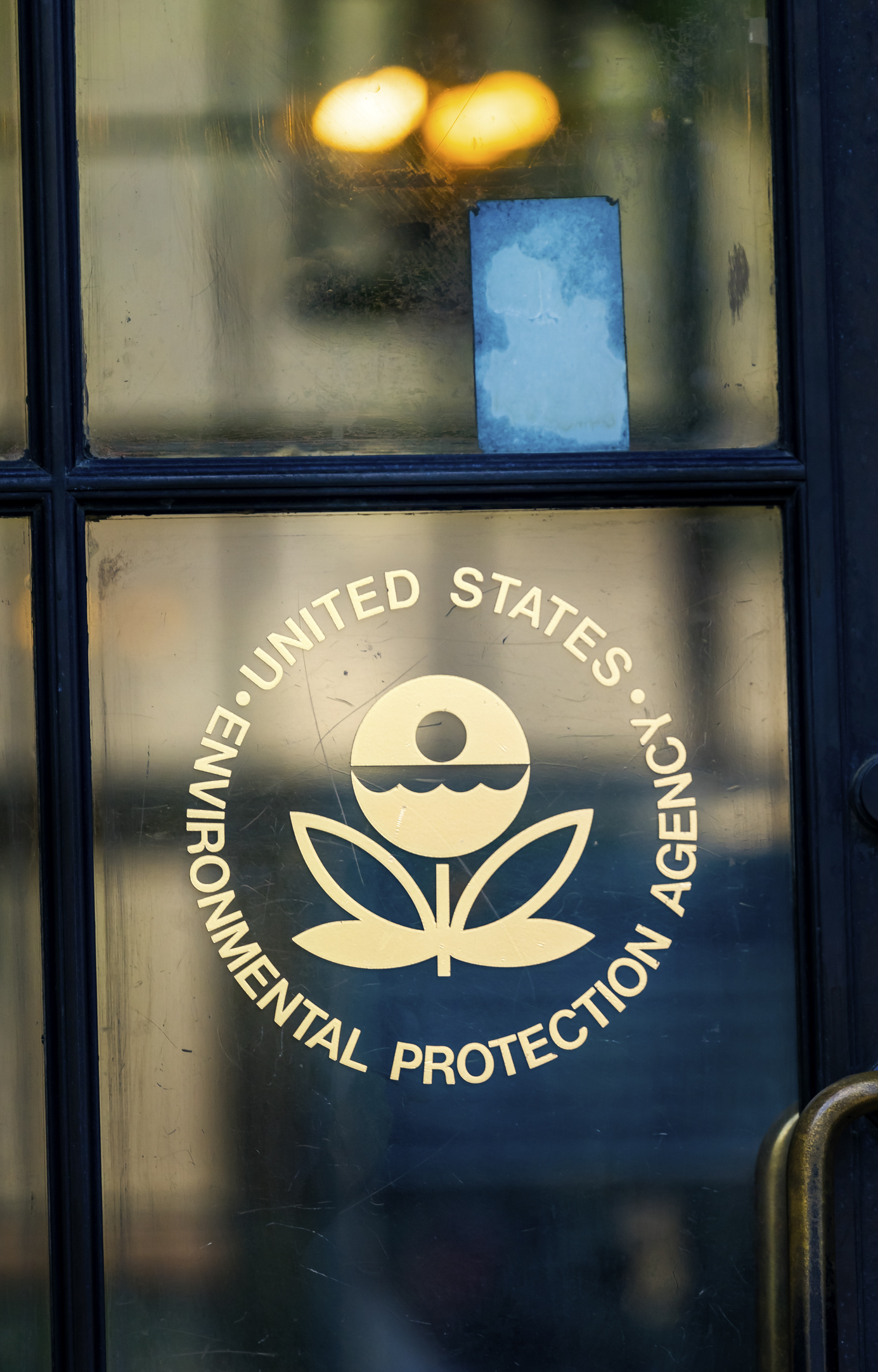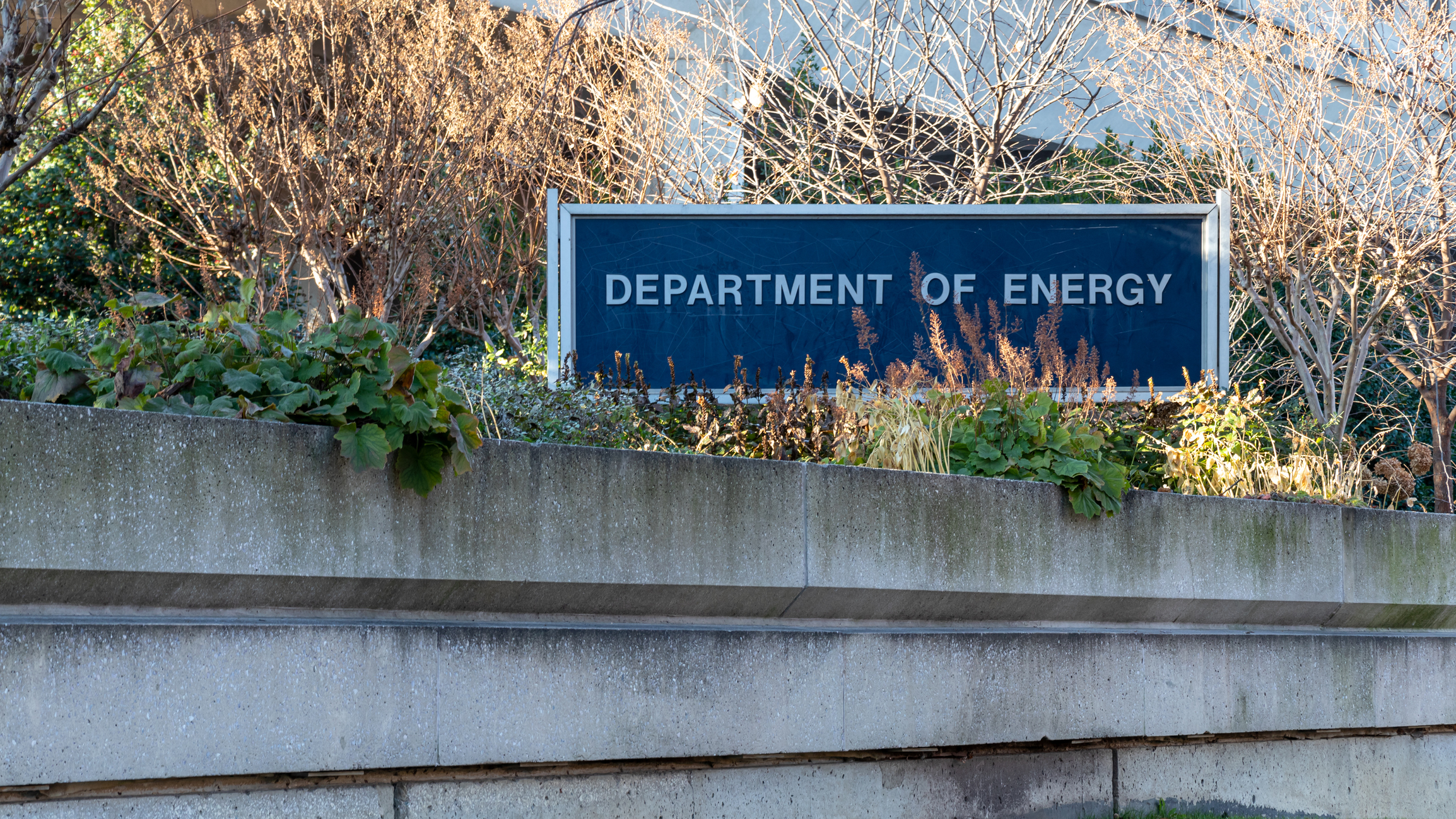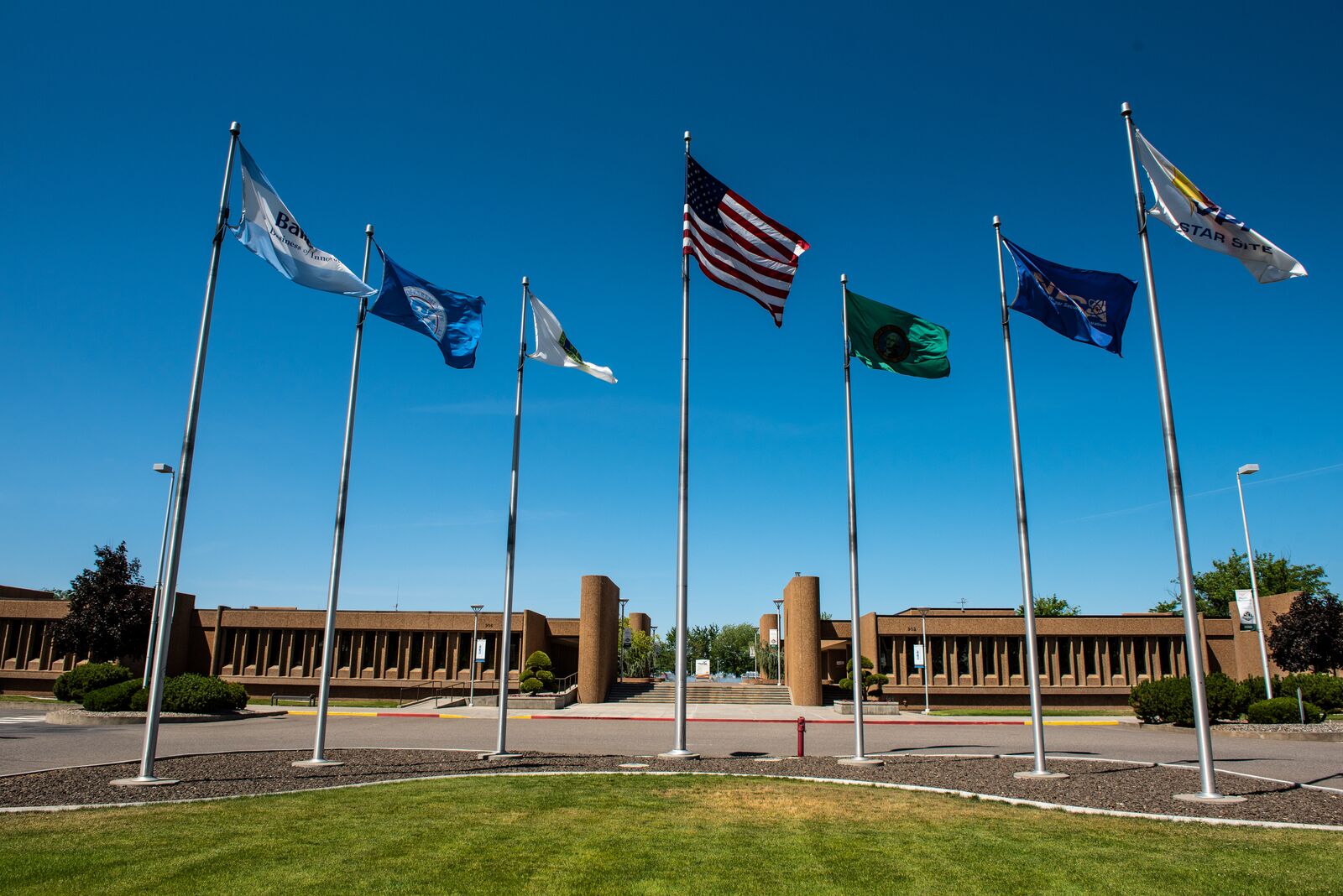Environmental Justice
An introduction to environmental justice
Environmental justice relates to the individuals and communities who are included in decisions that affect their environment. It maintains that people who have historically been denied this involvement—disadvantaged and underserved groups—should be included. Environmental justice also means these same individuals should be well informed of harmful environmental impacts that could affect them more than others.
Disadvantaged and underserved groups include persons of color; members of religious minorities; lesbian, gay, bisexual, transgender, and queer (LGBTQ+) persons; persons with disabilities; persons who live in rural areas; and persons otherwise adversely affected by persistent poverty or inequality. These communities are sometimes referred to as overburdened and can include those who experience high unemployment or underemployment; linguistic isolation; high cost of and/or lack of access to energy, water, sanitation, transportation, and health care services; and housing cost burdens and/or substandard housing and distressed neighborhoods.

Environmental justice is important because it concerns actions that can negatively affect human health or result in environmental hazards with disproportionately high and adverse impacts to affected populations. These hazards can include physical, chemical, and biological factors resulting from industrial, commercial, or municipal operations or from the implementation of federal, state, or local laws, regulations, or policies.
For example, a disadvantaged community may experience greater impacts because they live closest to a polluting facility or because they are more vulnerable to adverse effects. If they suffer from poor health conditions at a greater rate than the general population, a potential health impact may present a greater risk to them than to members of other communities.
These activities vary broadly but can include:
- Exposure to chemicals after petroleum or natural gas is processed
- Breathing cancer-causing emissions or contact with toxic waste discharge from large trash incinerators
- Exposure to chemical pesticides used in agriculture
- Disproportionate risks given the effects of climate change, including damaging storms or extreme heat, and inequitable access to disaster relief
- Community disruptions associated with construction and operation of industrial facilities, such as removing access to civic amenities or negatively affecting property values.
As it relates to the nation’s energy system, environmental justice concepts can be applied in many areas, including regulatory decision-making, environmental assessment, and evaluating the consequences of large and complex policies and projects. For instance:

- Choosing the site of a small modular nuclear power reactor but excluding the participation of impoverished populations who may be adversely affected
- Siting an energy industry project, such as a wind or solar farm, that might create possible environmental or health impacts to a community of color
- Proposing a power plant expansion but not considering how it might affect the lives and culture of a tribe.
Environmental justice, both generally and specific to the nation’s energy system, is achieved when the potential impacts from environmental and health hazards are properly disclosed to the affected public and all stakeholders have equal access to a decision-making process that supports a healthy environment in which to live, learn, and work.
Environmental justice timeline
Environmental justice finds its roots in early environmentalism, which became popular in the early 20th century, with an initial focus on wilderness protection and wildlife preservation. Yet, those goals were defined by the primarily white, middle- and upper-class supporters of early environmentalism. The objectives failed to encompass the broader and diverse value systems of other communities.
1960s

It wasn’t until the 1960s and the civil rights movement when equity concepts involving distribution of wealth, opportunities, and privileges began to merge with the goals of environmentalism. The era’s spotlight on social values helped shape a growing realization of environmental justice.
On paper, two sections of Title VI of the Civil Rights Act, which was enacted in 1964, formed the legal basis for environmental inequality. Section 601 prohibits discrimination based on race, color, or national origin by any government agency receiving federal assistance. Section 602 requires agencies to create rules and regulations that uphold Section 601.

On the streets, the civil rights era ushered in opportunities for people of color to begin organizing to oppose environmental threats. In the early 1960s, Latino farm workers, led by Cesar Chavez, fought for workplace rights, including protection from harmful pesticides. In 1967, the streets of Houston were filled with African American students who opposed a city garbage dump in their community. In 1968, environmental justice came to West Harlem, in New York City, where residents fought against construction of a sewage treatment plant.
More attention was given to how often indigenous groups were victimized. Mining for uranium, which is used to operate nuclear power plants, resulted in many abuses to Native Americans. Not only have mining operations significantly depleted tribes’ limited water supplies, but they also have contaminated water supplies with uranium. Federal courts did not force mining companies to comply with U.S. clean water regulations until 1980.

Mining Reclamation and Enforcement | vbgov.com)
1970s

Washington, D.C. (bpperry | istockphoto.com)
As greater concern for environmental pollution became more evident, the Nixon administration created the U.S. Environmental Protection Agency (EPA) in 1970 to "… protect human health and the environment.”
Shortly after, the National Environmental Policy Act (NEPA) was signed into law. Since its enactment, NEPA has required all federal agencies to assess the environmental effects of their proposed actions before making decisions. The range of actions covered by NEPA is broad and includes:
- Making decisions on permit applications
- Adopting federal land management actions
- Constructing highways and publicly owned facilities.
The NEPA process requires federal agencies to evaluate the environmental and related social and economic effects of their proposed actions, as well as provide opportunity for public review and comment on those evaluations.
The activities coincide with establishment of the Clean Air Act in 1970, which is the federal law regulating air emissions from stationary and mobile sources. Among other things, this law authorized EPA to establish National Ambient Air Quality Standards to protect public health and public welfare and to regulate emissions of hazardous air pollutants.

In 1972, passage of the Clean Water Act established the basic structure for regulating discharges of pollutants into U.S. waters and regulating quality standards for surface waters. Shortly thereafter, in 1974, the Safe Drinking Water Act was enacted to create protective drinking water standards for more than 90 contaminants.
Then, in 1976, passage of the Toxic Substances Control Act provided EPA with authority to require reporting, record-keeping and testing requirements, and restrictions relating to chemical substances and/or mixtures.
The 1960s and 1970s also marked an era of urban renewal in the United States—a new vision of progress intended to clear out the “slums,” get rid of "obsolete" buildings, and make way for a quickly growing population and their cars. Urban renewal ushered in the demolition of entire blocks, neighborhoods, and business districts.
Counter to this movement, the National Historic Preservation Act (NHPA) was created to govern how places that define America’s past are treated. It was the first national policy governing preservation, and it continues to shape the fate of many historic and cultural sites today.
The NHPA law also prompted the President's Advisory Council on Historic Preservation and the National Register of Historic Places (NRHP). The NRHP is an official list not only of individual buildings and structures but also of districts, objects, and archeological sites that are important because of their connection with the past. It requires that federal projects—or those using federal funds—undergo a Section 106 review to determine whether work would harm a site and, if so, adopt an approach to avoid or minimize the harm.
The 1970s also saw passage of the Archaeological Resources Protection Act (ARPA) of 1979, a federal law governing the excavation of archaeological sites on federal and Indian lands in the United States and the removal and disposition of archaeological collections from those sites. The act assures these resources are considered an irreplaceable part of the nation’s heritage.
1980s
In 1982, a majority African American community in Warren County, North Carolina, was set to bear the impacts of receiving soil contaminated with polycarbonated biphenal, which is a highly toxic chemical compound. This proposed action triggered a wave of protests and a surge of protestors who attempted to block delivery of the soil.

In 1983, a federal report showed black communities in the South were home to a disproportionately high percentage of waste sites.
The Emergency Planning and Community Right-to-Know Act (EPCRA) of 1986 was created to help communities plan for chemical emergencies. It also requires industry to report on the storage, use, and releases of hazardous substances to federal, state, local, and tribal governments.
A 1987 study, “Toxic Wastes and Race in the United States,” commissioned by the United Church of Christ, which was involved in the 1982 Warren County protests, concluded that the best predictor of whether someone would live near a toxic waste site was the color of their skin.
1990s and beyond
By the 1990s and into the 21st century, environmental justice advocates began channeling their efforts into more collective approaches by establishing networks and working through caucuses and other assemblies. They began looking for allies among traditional, primarily white environmental organizations, and their efforts resulted in further passage of more federal laws meant to protect people and lands.
The Native American Graves Protection and Repatriation Act (NAGPRA) was a federal law passed in 1990 to provide a process for museums and federal agencies to return certain Native American cultural items—human remains, funerary objects, sacred objects, or objects of cultural patrimony—to lineal descendants and culturally affiliated Indian tribes and Native Hawaiian organizations.

In 1991, over 1,000 people attended the first National People of Color Environmental Leadership Summit in Washington, D.C., one of the most important events in the environmental justice movement. While there, attendees drafted “Principles of Environmental Justice” that include 17 precepts still used today to guide research, activist movements, and policy decisions. The meeting demonstrated that it is possible to build a multi-racial grassroots movement around environmental and economic justice.
In 1992, the same year the EPA put out its first definition of “environmental justice,” the nation’s first center dedicated to environmental justice was founded, the Deep South Center for Environmental Justice at Xavier University in Louisiana.
Important books on the subject were also published beginning in the 1990s including, Dumping in Dixie: Race Class and Environmental Quality, in which sociologist Richard Bullard told the stories of five efforts by communities of color to secure their right to live in a healthy environment.
In 1994, the EPA and other federal agencies were additionally legally bound to account for environmental justice in their practices under President Clinton’s Executive Order 12898. The order required that achieving environmental justice must be part of each federal agency's mission. Under the order, agencies must develop strategies that identify and address environmental hazards by:
- Promoting enforcement of all health and environmental statutes in areas with minority and low-income populations
- Assuring greater public participation
- Improving research and data collection relating to the health and environment of minority and low-income populations
- Identifying differential patterns of consumption of natural resources among minority and low-income populations.
Other federal agencies subject to this order include the U.S. Department of Housing and Urban Development, the U.S. Department of Transportation, the U.S. Department of Agriculture (USDA), and more. The USDA is the executive agency responsible for federal policies on food, agriculture, natural resources, and quality of life in rural America. Specific to USDA, its Natural Resources and Environment department is generally responsible for USDA's environmental justice strategy.
In January 2021, President Biden issued Executive Order 13985. Titled, “Advancing Racial Equity and Support for Underserved Communities Through the Federal Government,” this order establishes requirements to advance racial equity and support for underserved communities through the federal government. Other requirements outlined by the Biden administration include expanding the definition of underserved communities beyond just race and income (13985, OMB&CEQ guidance); mandating that agencies examine their policies/programs and develop strategies to address environmental justice, including Justice40 (13990 and 14008); requiring development of environmental justice screening tools (14008); and establishing indicators to define disadvantaged communities (OMB&CEQ interim Justice40 implementation guidance).
Environmental justice and the energy industry

To decrease the energy industry’s environmental burdens on underserved and disadvantaged groups, several agencies and offices were created. The Nuclear Regulatory Commission (NRC), an independent agency of the U.S. government, was created in 1974 to protect public health and safety related to nuclear energy. Also, the Department of Energy (DOE), a cabinet-level department of the federal government created in 1977, is concerned with U.S. policies regarding energy and safety in handling nuclear material. Under NEPA regulations specific to nuclear facility siting, NRC and DOE are required to account for:
- Potential health impacts such as radiological health, air quality, noise, etc.
- Environmental impacts specific to ecology, hydrology, and historic and cultural resources, etc.
- Socioeconomic impacts such as transportation and community infrastructure, education, economics, etc.
EPA’s Office of Environmental Justice was created in 1992 to coordinate EPA’s environmental justice efforts. The office promotes environmental benefits and works with all levels of government and communities to build a healthier and more sustainable environment.
To further address the complexities of energy-related environmental and health issues, additional policies and regulations followed that apply to industries such as nuclear, coal, oil and gas, biomass, and hydroelectric power.
Pacific Northwest National Laboratory and environmental justice

Pacific Northwest National Laboratory (PNNL), founded in 1965 and operated by Battelle for DOE’s Office of Science, contributes to environmental justice by partnering with DOE, NRC, federal, and state agencies and with industry to identify and engage minority, low-income, resource-dependent, or other historically disadvantaged populations in regulatory decision-making, environmental assessment, and impact estimation of the consequences of large and complex federal polices and projects.
PNNL’s environmental justice capabilities
- Conducting demographic analyses to identify minority, low-income, and many other disadvantaged populations potentially affected by federal actions
- Performing local area assessments and directly engaging with organizations representing affected populations. Examples of these assessments follow:
- Consent-based siting work
- Tribal engagement
- NEPA tribal and/or cultural resource compliance
- NHPA consultation support, including Section 106 assessments
- NRHP evaluation
- ARPA damage assessment
- Identifying potential adverse environmental or health affects linked to federal projects that may disproportionately impact disadvantaged communities.
PNNL’s interdisciplinary team includes experts in applied anthropology, archaeology, economics, environmental policy, and tribal engagement.
PNNL’s environmental justice tools
Inform environmental assessments
- PNNL’s Framework for Assessment of Complex Environmental Tradeoffs (FACET) is a unique, transparent method for assessing complex and competing environmental, social, and economic issues. It offers customizable support for policy and business decisions, resulting in risk-informed, socially equitable, and defensible evaluations for all stakeholders.
Streamline policy compliance
- Specific to Executive Order 12898, PNNL helps agencies identify and address disproportionately high and adverse human health or environmental effects of their programs, policies, and activities on low-income or minority populations.
- PNNL provides technical support in complying with Executive Order 13985 including population screening analysis, impact pathway identification, and techniques for agency staff to use in assessing environmental justice impacts of federal actions.
Facilitate stakeholder identification and public engagement
- PNNL has four decades of experience in public outreach, including developing and managing stakeholder engagement campaigns, facilitating large meetings, and conducting individual interviews.
Managing public and stakeholder comment
- PNNL developed its Comment Response Management System to provide a rapid and effective way to efficiently synthesize stakeholder engagement. It has been used successfully to process tens of thousands of comments and shorten agency response time, while facilitating consistency and making sure comments and concerns are captured and incorporated into the decision-making process and record.
Assuring energy equity
PNNL is spearheading an effort to advance equity and energy justice through the role of scientific research with the goal of building an advanced national power grid, transitioning to clean reliable energy, and designing smart buildings.